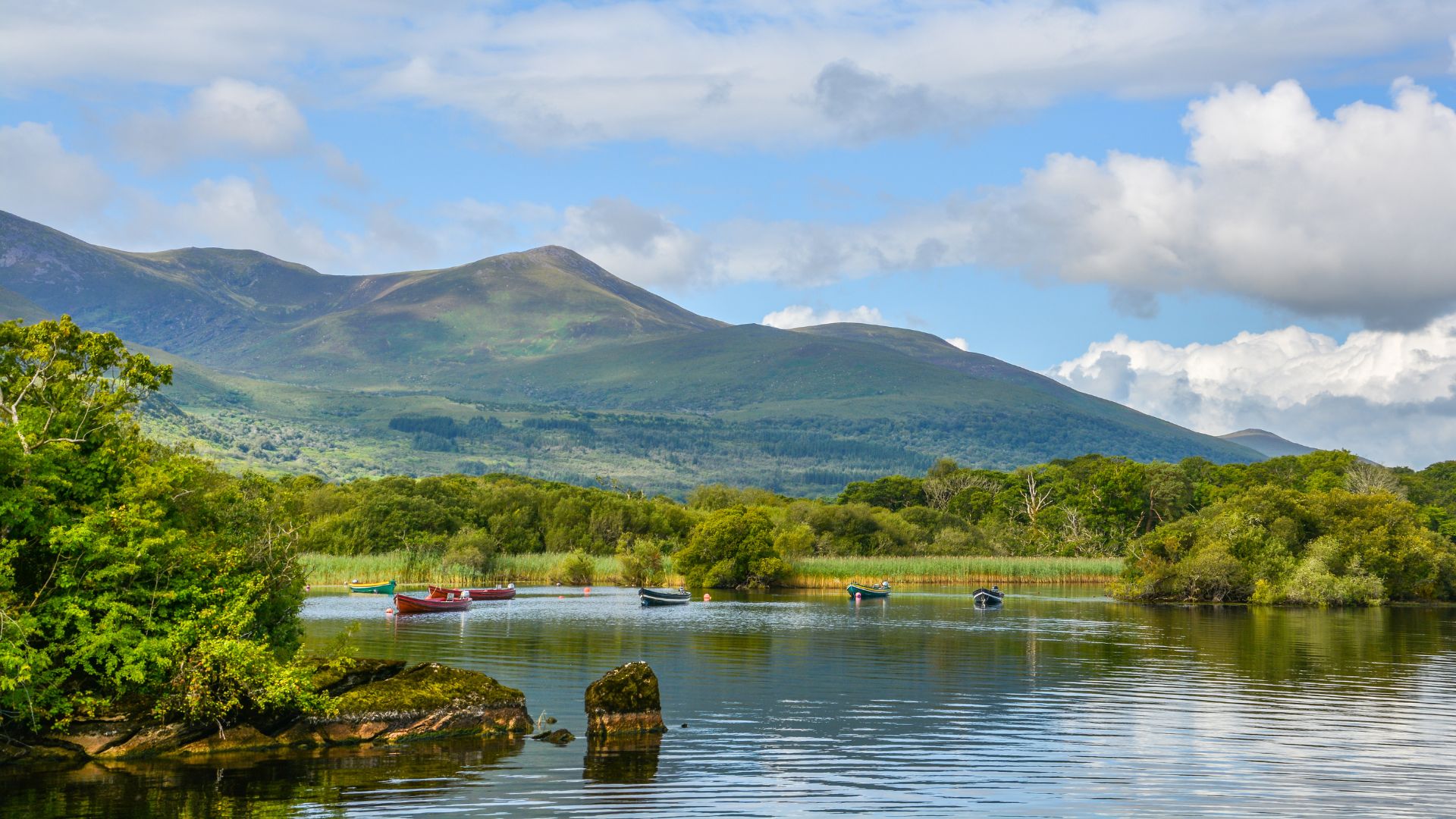The 2021 UN Climate Change Conference in Glasgow (COP26) brought together 120 world leaders, over 40,000 registered participants and 3,886 media representatives. There was a thought-provoking and inspiring speech delivered by a wise 97-year-old Sir David Attenborough, at the opening of COP 26. He noted that “This climate emergency comes down to a single number, the concentration of carbon in our atmosphere”, highlighted as 414 ppm. Just over 10,000 years ago the number stabilised at approx. 275ppm and with it earth’s climate, creating predictable seasons with temperatures not wavering by +/-1 °C until now. This change is attributable to our release of carbon at an unprecedented scale. Watch Sir David Attenborough’s full COP26 speech – YouTube
“We are already in trouble” but the fact the problem is and will be the current generation’s reality provides the impetus to act. With the greatest problem solvers to ever exist, we know how to solve this problem. He closes by noting that there has been a decline in his lifetime, but in the future, we could witness a wonderful recovery.
The UN is acting through the promotion of “The Sustainable Development Goals”. SDG’s are a set of 17 goals effectively calling for action by all countries to promote prosperity while protecting the planet. It is important that we achieve them all by 2030. Of the 17 goals, number 13 calls for urgent action to combat climate change, but all of the goals influence climate change – and vice versa. At Sharm el-Sheikh COP 27, November 2022, UN Climate Change Executive Secretary Simon Stiell called for aligning “every corner of human activity” with the 1.5°C target goal, saying “Paris gave us the agreement, Katowice and Glasgow gave us the plan, Sharm el-Sheikh shifts us to implementation.”

Our National Response
Ireland’s 2023 Climate Action Plan (CAP 2023) is the second annual update to our 2019 Plan, and the first prepared under the Climate Action and Low Carbon Development (Amendment) Act 2021. The plan officially launched on 21 December 2022 implements the carbon budgets and sectoral emissions ceilings, setting a roadmap for taking decisive action to halve our emissions by 2030 and reach net zero no later than 2050, as committed to in the Programme for Government.
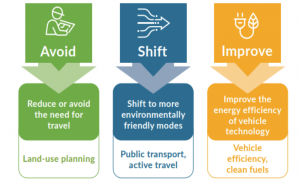
The key sources of our GHG emissions identified in CAP23 include; Agriculture (33.3%), Transport (15.7%) and Energy (14.4%). The transport sector has been the fastest growing source of GHG emissions over the past three decades, showing a 112% increase between 1990 and 2021. CAP 2023 calls for a significant cut in transport emissions by 2030 to meet its ceiling “Meeting the 2030 transport targets will require transformational change and accelerated action” requiring a “Modal Shift in Transport and Fleet Electrification”.

In measurable terms this will require a 20% reduction in vehicle kilometres travelled, and significant increases to the level of additional public transport and active travel journeys per day. The Framework to achieve action for the transport sector is through a three-pronged approach “Avoid – Shift – Improve” and the CAP 2023 sets out some key metrics to deliver abatement, refer to Table 15.6 of the Plan. Dr. John Martin, Department of Transport Head of the Climate Engagement and Governance provides in-depth coverage of the transport section of the Climate Action Plan – Engineers Ireland Presentation on 31 Jan 2023. Suffice to say that he describes the plan as being at “high levels of ambition”.
Are we making any real progress?
CAP21 started the transition with significant progress made in the intervening period. As well as the capital investment Programmes committed to under the NDP to year 2025, some key achievements in the Transport sector alone include:
- Completion of a public consultation on the National Cycle Network Strategy;
- Planning guidelines for EV charging infrastructure reviewed and guidance issued to Local Authorities;
- Launch of the Phase 2 of the BusConnects Dublin Network Redesign;
- Publication of new Sustainable Mobility Policy;
- Publication of a new investment framework for land transport in Ireland;
- Publication of updated Policy Statement on Renewable Fuels.
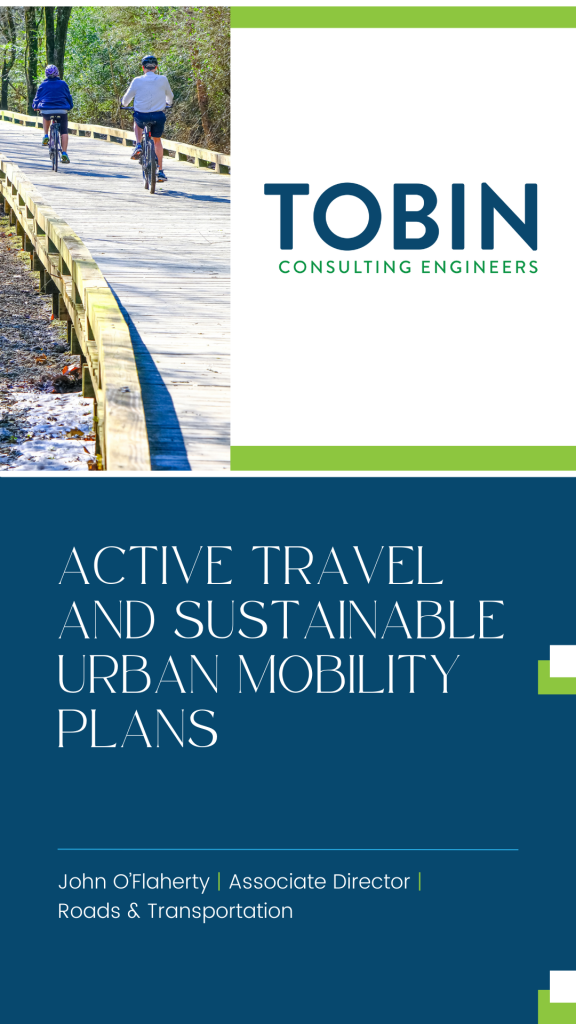 Our Roads and Transportation Operations Director, in TOBIN, previously posted on February 24, 2022, an insightful blog on the area of Active Travel and Sustainable Urban Mobility Plans.
Our Roads and Transportation Operations Director, in TOBIN, previously posted on February 24, 2022, an insightful blog on the area of Active Travel and Sustainable Urban Mobility Plans.
This was timely and just ahead of the April 2022 publication of the Sustainable Mobility Policy (SMP). Under the Policy, our Government is committed to delivering at least 500,000 additional daily active travel and public transport journeys and a 10% reduction in kilometres driven by fossil-fueled cars by 2030.
Ireland’s Sustainable Mobility Policy Pathfinder Programme
The National Sustainable Mobility Policy creates a strategic framework for supporting active travel and public transport use in Ireland until 2030. The policy lays the foundations for system changes in transport that will help achieve net-zero emissions by 2050. Aligned with a key action in CAP23, an SMP Delivery Team has been established to identify ‘pathfinder’ projects that demonstrate the opportunities from sustainable mobility interventions and build capacity for accelerated replication and scaling-up.
The objectives of the Pathfinder Programme are fully aligned with the recommendations of the OECD report on Transport in Ireland “Redesigning transport: Towards Irish transport systems that work for people and the planet”.
The OECD recognise that the Sustainable Mobility Policy has “medium to high potential” to bring about transformative change to the structure of Ireland’s transport system, and strongly recommended that implementation of the SMP be further prioritised and scaled up.
Pathfinder Projects
Transport Minister Eamon Ryan T.D. launching the Pathfinder Programme of 35 exemplar transport projects to be delivered by local authorities and agencies, such as the NTA, around the country by 2025 noted that it is envisaged that the selected Pathfinder projects will begin to transform how we move, work and live across the country. They will meet key criteria on issues such as health, well-being, place-making, permeability, and universal design. They are split into five categories:
National Impact includes CycleConnects, a national brand coordinating high-quality cycle routes in urban areas.
Cycle Network/ Corridor Proposals projects such as West Wexford Urban Cycle Network, Sligo Cycle Corridor and Meath Rural Cycleway Rapid Development.
Public Transport projects such as Moyross Train Station and Athlone Bus Electrification.
15 Minute Neighbourhoods projects such as the Letterkenny Active Travel Town and Naas Mobility Network and the 5 Cities Active Travel Demonstrators.
Serving Schools/Universities projects like the acceleration of the Safe Routes to School Programme, Limerick University Connectivity, and BusIT2School in Co. Meath.
Workshops and Research includes nationwide Sustainable Mobility Training Workshops and Leitrim “Green Mile” Mobility Pilot.
Here at TOBIN, we are delighted to be acting as Lead Consulting Engineers, providing leading engineering and scientific advice on several of the 35 projects, identified under the Pathfinder Programme, spread across the country as follows:

In terms of delivery of similar type projects, our roads division has acted as Employers Representative for the recently completed Edenderry Inner Relief Road which includes approx. 1.1km of link roads, footpaths & cycleways. Works which include Junction Upgrades and Signalisation, DMURS & NTA standard carriageway including full active travel provision between the R401 Kinnegad and R402 Dublin Roads.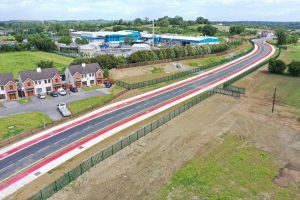
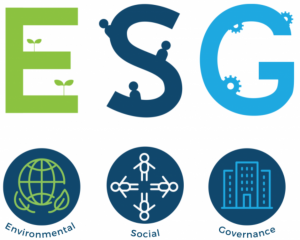
Providing vital support services to such Programmes aligns well with the TOBIN ethos and our Core Values particularly relating to Sustainability and innovation, which we have championed for over 70 years as a multidisciplinary practice. This is reinforced through our application of Environmental Social Governance standards which support our long-term strategy: growth in a conscious manner.
On a personal level, the aims of these projects provide a sense of Nostalgia, engendering a sense of the culture that I recall from my formative years; of walking and cycling to school on much quieter and less car-dominant environments, appreciating nature en route, through to utilising the publicly available school bus as the main means of transport to secondary school and later carpooling to get to college.
From that perspective, one can only feel invested as a problem solver, in what we all hope and aspire to witness “the wonderful recovery”.



